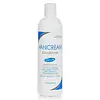What's inside
What's inside
 Key Ingredients
Key Ingredients

No key ingredients
 Benefits
Benefits

 Concerns
Concerns

 Ingredients Side-by-side
Ingredients Side-by-side

Water
Skin ConditioningCetyl Alcohol
EmollientCetearyl Alcohol
EmollientBehentrimonium Chloride
PreservativeGlycerin
HumectantHydrogenated Ethylhexyl Olivate
EmollientGlyceryl Caprylate
EmollientCitrus Aurantium Dulcis Peel Oil
MaskingStearalkonium Chloride
PreservativePanthenol
Skin ConditioningTocopherol
AntioxidantCitrullus Lanatus Fruit Extract
Skin ConditioningCitrus Sinensis Fruit Extract
AntioxidantCitrus Nobilis Peel Oil
MaskingRubus Fruticosus Fruit Extract
AstringentChamomilla Recutita Flower Extract
MaskingEuterpe Oleracea Fruit Extract
Rosa Canina Fruit Extract
AstringentCalendula Officinalis Flower Extract
MaskingAspalathus Linearis Leaf Extract
Skin ConditioningPunica Granatum Extract
AstringentArgania Spinosa Kernel Oil
EmollientTheobroma Cacao Seed Butter
EmollientEugenia Caryophyllus Bud Oil
MaskingArginine
MaskingLactic Acid
BufferingGuar Hydroxypropyltrimonium Chloride
Skin ConditioningGlyceryl Undecylenate
EmollientHydrogenated Olive Oil Unsaponifiables
EmollientGlyceryl Stearate
EmollientHydroxyethylcellulose
Emulsion StabilisingIsopropyl Alcohol
SolventCaprylhydroxamic Acid
Potassium Sorbate
PreservativeSodium Benzoate
MaskingWater, Cetyl Alcohol, Cetearyl Alcohol, Behentrimonium Chloride, Glycerin, Hydrogenated Ethylhexyl Olivate, Glyceryl Caprylate, Citrus Aurantium Dulcis Peel Oil, Stearalkonium Chloride, Panthenol, Tocopherol, Citrullus Lanatus Fruit Extract, Citrus Sinensis Fruit Extract, Citrus Nobilis Peel Oil, Rubus Fruticosus Fruit Extract, Chamomilla Recutita Flower Extract, Euterpe Oleracea Fruit Extract, Rosa Canina Fruit Extract, Calendula Officinalis Flower Extract, Aspalathus Linearis Leaf Extract, Punica Granatum Extract, Argania Spinosa Kernel Oil, Theobroma Cacao Seed Butter, Eugenia Caryophyllus Bud Oil, Arginine, Lactic Acid, Guar Hydroxypropyltrimonium Chloride, Glyceryl Undecylenate, Hydrogenated Olive Oil Unsaponifiables, Glyceryl Stearate, Hydroxyethylcellulose, Isopropyl Alcohol, Caprylhydroxamic Acid, Potassium Sorbate, Sodium Benzoate
Ingredients Explained
These ingredients are found in both products.
Ingredients higher up in an ingredient list are typically present in a larger amount.
Arginine is an amino acid that is important for human development. Your body uses is it to produce hair keratin and skin collagen.
As a cosmetic ingredient, Arginine has antioxidant properties and can also help repair damaged skin. This ingredient is derived either synthetically or from animals.
Arginine isn't fungal acne safe when used in the presence of other lipids (fats, fatty acids, oils, esters, etc). Oils and fats occur naturally within the skin, so take caution when using Arginine if you're prone to fungal acne.
Learn more about ArginineCetearyl alcohol is a mixture of two fatty alcohols: cetyl alcohol and stearyl alcohol. It is mainly used as an emulsifier. Emulsifiers help prevent the separation of oils and products. Due to its composition, it can also be used to thicken a product or help create foam.
Cetearyl alcohol is an emollient. Emollients help soothe and hydrate the skin by trapping moisture.
Studies show Cetearyl alcohol is non-toxic and non-irritating. The FDA allows products labeled "alcohol-free" to have fatty alcohols.
This ingredient is usually derived from plant oils such as palm, vegetable, or coconut oils. There is debate on whether this ingredient will cause acne.
Due to the fatty acid base, this ingredient may not be Malassezia folliculitis safe.
Learn more about Cetearyl AlcoholGlycerin is already naturally found in your skin. It helps moisturize and protect your skin.
A study from 2016 found glycerin to be more effective as a humectant than AHAs and hyaluronic acid.
As a humectant, it helps the skin stay hydrated by pulling moisture to your skin. The low molecular weight of glycerin allows it to pull moisture into the deeper layers of your skin.
Hydrated skin improves your skin barrier; Your skin barrier helps protect against irritants and bacteria.
Glycerin has also been found to have antimicrobial and antiviral properties. Due to these properties, glycerin is often used in wound and burn treatments.
In cosmetics, glycerin is usually derived from plants such as soybean or palm. However, it can also be sourced from animals, such as tallow or animal fat.
This ingredient is organic, colorless, odorless, and non-toxic.
Glycerin is the name for this ingredient in American English. British English uses Glycerol/Glycerine.
Learn more about GlycerinPanthenol is a common ingredient that helps hydrate and soothe the skin. It is found naturally in our skin and hair.
There are two forms of panthenol: D and L.
D-panthenol is also known as dexpanthenol. Most cosmetics use dexpanthenol or a mixture of D and L-panthenol.
Panthenol is famous due to its ability to go deeper into the skin's layers. Using this ingredient has numerous pros (and no cons):
Like hyaluronic acid, panthenol is a humectant. Humectants are able to bind and hold large amounts of water to keep skin hydrated.
This ingredient works well for wound healing. It works by increasing tissue in the wound and helps close open wounds.
Once oxidized, panthenol converts to pantothenic acid. Panthothenic acid is found in all living cells.
This ingredient is also referred to as pro-vitamin B5.
Learn more about PanthenolWater. It's the most common cosmetic ingredient of all. You'll usually see it at the top of ingredient lists, meaning that it makes up the largest part of the product.
So why is it so popular? Water most often acts as a solvent - this means that it helps dissolve other ingredients into the formulation.
You'll also recognize water as that liquid we all need to stay alive. If you see this, drink a glass of water. Stay hydrated!
Learn more about Water